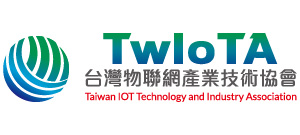Reshape the Future with AI
當然AI 也帶來新的機會。AI 可以為IC產品賦予新的功能,同時也有可能成為IC行業提高效率的關鍵工具。此外,開源處理機架構可以提供強大而靈活的設計元件來實現複雜的AI運算架構。這些都為IC產業帶來了革命性的新機遇!
2024年9月10日至11日將於新竹晶宴會館舉辦 “Reshape the Future with AI”系列活動,包含9月10日由TICD與Accellera所主辦的2024 DVCon Taiwan,以及9月11日則由台灣RISC-V聯盟所主辦的 2024 RISC-V Taipei Day。本系列活動極具價值,非常歡迎任何有興趣瞭解最先進 IC技術的人參與。
報名參加
DVCon Taiwan 2024
Lean more
RISC-V Taipei Day
9月11日,歡迎參與由台灣RISC-V聯盟主辦的 2024 RISC-V Taipei Day,我們將邀請重磅級國內外半導體專家親自剖析RISC-V這一年以來的技術進展,共同解鎖RISC-V開源處理器架構在AI時代,如何為複雜的IC系統與AI運算架構賦能,啟動計算新革命!
精彩議程
Welcome
Opening
DVCon Taiwan 2024 Steering Committee
Keynote 1: May the Dependability Be with You: Reliability and Resilience Challenges in SoC Design
Alessandra Nardi PhD | Chair, Functional Safety Working Group, Accellera (Executive Director, System Solutions Group, Synopsys)
Keynote 2: Not Your Father’s Formal Verification
Erik Seligman | Sr. Product Engineering Architect, Cadence
Keynote 3: Empowering Design and Verification with AI / ML
Chilai Huang | Senior Director, R&D, Siemens
Traditional design flows, which rely on disparate point tools for optimization, will struggle to meet the demands of these emerging systems. Hence, within the context of the new 3DIC design and verification landscape, this keynote will describe how to leverage integrated, AI/ML-powered D&V technology to get the necessary step-function productivity improvements for these complex projects.
Morning Break
Panel Discussion: AI for Formal Engineering and Formal Engineering for AI – What catches up fast?
Moderator: Chung-Yang (Ric) Huang | Professor, EE, NTU
Panelist: Sandeep Jana | Sr. Director, VC Formal R&D, Synopsys
Panelist: Chilai Huang | Senior Director, Avery R&D, Siemens
Panelist: Chris Komar | Sr. Product Engineering Group Director, Cadence
Lunch Break
Nitin Kishore | Truechip
Improving UVM test benches using UVM Run time phases
Lingkai Shi & Prosper Chen | AMD
Solving Memory Configurations Challenge with SVRAND Verification Flow
Krunal Kapadiya | Cadence
The RTL-Level SDC Timing Exception Verification
ChienLin Huang | MediaTek
Afternoon Break 1
Exploring Token-Based Strategies to Enhance Data Security and Memory Management in PCIe Devices
Gopi Srinivas Deepala | Silicon Interface
Verifying Configurable AndesCore Processors by Using Portable Testing and Stimulus Standard (PSS)
Luther Kai Xuan Lee | Andes
To address these limitations, we developed a PSS-based test generation tool for verifying AndesCore processors. Its efficacy is demonstrated through two case studies: 1) pipeline forwarding, and 2) instruction decoding for vector extension. Notably, we made this tool openly available on GitHub, fostering transparency and community engagement.
Left-shifting Testbench Development Using Environment Inversion in UVM
Yu-Ju Su | Synopsys
Adopts ISA-Formal On High-End Out-Of-Order Execute RISC-V Cores
Yu-Tse Huang | Andes
We reveal three major steps to provide convincing results.
1. A reusable ISA model generated from Sail RISC-V.
2. A pipeline follower to collect information from design.
3. An universal assertion to make sure the RTL produces the same result as predicted.
First, we demostrate the steps of using Sail RISC-V formal model with custom codes (e.g., RAM read and write functions) to create reusable instruction models. Secondly, we leverage the reorder buffer (ROB) structure to create a CPU pipeline follower to extract essential information, such as general purpose registers (GPRs) states, and system control state registers (CSRs).
Finally, we describe the implementation of the one-cycle assertion model to setup the ISA formal check. We adopt the ISA formal approach proposed by Alastair Reid and etc. [1], on a high-end OOO CPU design. The result not only shows the capability of formal verification but also highlights the importance of a strong formal model for RISC-V ecosystem. In this paper, we demonstrate a design bug, which was found immediately by adding new CSRs to the Sail model, proves the power and effectiveness of this solution.
Afternoon Break 2
Award
Philip Tsai | GUC
Jimmy Liu | NYCU
The ASIC Renaissance – A glance into the future SoC enablement
Kurt Huang PhD | TESDA
Trojan Horse Detection for RISC-V Cores Using Cross-Auditing
Siang-Cheng Huang | NTHU
Integrated verification ecosystem for regression management, coverage convergence, and debug automation
William Huang | Synopsys
Although each tool handles its respective field well, they can be further integrated to construct a comprehensive verification automation ecosystem by automatic connection and data utilization between tools. In this paper, we’ll introduce how the proposed verification automation ecosystem can facilitate user’s daily tasks in the verification flow.
Conquering UCIe 1.1 Multi-die System Verification Challenges
Varun Agrawal | Synopsys
UCIe 1.1 addresses four broad areas that encourage a thriving open chiplet ecosystem. These include enhancements like automotive segment, streaming protocol usages, cost optimization for advanced packages, and compliance testing.
This session focuses on key design considerations to bring forward the verification requirements and an overview of verification solution to enable UCIe 1.1 complex designs.
Afternoon Break 1
Enable power-aware UPF emulation on Palladium
Nan-Shing Lee | MediaTek
Cheng-Yuan Shueh | Cadence
To achieve completed verification of power architecture and low-power functionality, MTK has realized the engagement of power structure on Palladium especially on unplugged products. With strong debugging capability of Palladium, UPF compilation and related verification on emulation environment became very easy. Palladium models the supply network, power off-on, corruption, isolation, and retention in the emulation netlist image, which is generated from the RTL files and 1801 files. Additionally, Palladium also satisfied MTK with customized requirements such as special UPF syntax supporting, customized model behavior development, collaboration of special RTL and UPF structure for more complicated application and better cooperation.
Augment and Automate Formal for Designers
Kanwar Pal Singh | Cadence
Better Late Than Never – Collecting Coverage From Ones and Zeroes
Tsungyu Tsai | Siemens
A Comprehensive Data-Driven Function Verification Process
Tsungyu Tsai | Siemens
RISC-V: More Than AI
Mr. Frankwell Lin|Chairman, RISC-V Taiwan Alliance (Chairman and CEO, Andes Technology)
Welcome Remark
Dr. Alex Wang|Chairman, Taiwan IoT Technology and Industry Association, TwIoTA
Welcome Remark
Inviting Government Representative
Group Photo of Speakers
Architecture of Choice for AI
Lu Dai|Board Chair, RISC-V International
Leveraging RISC-V Solutions for Intelligence Everywhere
Dr. Charlie Su|President and CTO, Andes Technology
In this talk, we will first look at RISC-V’s successful stories in various applications and highlight AI/ML adoptions. We will examine the opportunities on fast-growing Edge AI applications, and the competitive advantages of RISC-V for AI/ML. We will then introduce Andes processor IP solutions for Intelligent Edge Application Processing, choices of SoC architecture and software support.
Empowering AI Innovation with Customized and Open-Source RISC-V Processors
Wei-Han, Lien|Chief CPU Architect and Senior Fellow, Tenstorrent
Using the RISC-V ecosystem to build System-on-Chips (SoCs) for Artificial Intelligence (AI) applications
Mark Hayter|Chief Strategy Officer & Co-Founder, Rivos Inc.
The ability to combine open-source software with customized cores provides an immensely powerful SoC solution. This approach allows companies to develop products faster while maintaining a consistent software stack, providing a better user experience.
Mark demonstrates how combining open, commercial and custom RISC-V cores delivers an optimized high performance solution for AI workloads. He highlights the benefits of an open-standard architecture, collaboration on open-source software, and enabling diverse yet differentiated solutions within the industry.
Break & Exhibit Tour
RISC-V Trend and AI
Moderator:
Dr. Ryan Chen | Advisor, MediaTek Inc.
Panelist:
Lu Dai|Board Chair, RISC-V International
Dr. Charlie Su|President and CTO, Andes Technology
Wei-Han, Lien | Chief CPU Architect and Senior Fellow, Tenstorrent
Mark Hayter|Chief Strategy Officer & Co-Founder, Rivos Inc.
Lunch/Exhibit Tour
Empowering RISC-V Software: Strengths, Challenges, and Opportunities in Open Source Collaboration
Barna Ibrahim|Vice Chair, RISE Project
Established in May 2023, the RISC-V Software Ecosystem (RISE) aims to accelerate software development in the RISC-V ecosystem by reducing barriers. RISE focuses on member information sharing, building developer infrastructure like build farms, and engaging the community through RFPs and a developer incentive program. RISE is dedicated to helping the RISC-V ecosystem flourish and achieve parity with other architectures.
The Golden Age of Computer Architecture with MIcrochip and RISC-V
Ted Speers|Technical Fellow, Microchip Technology
RISC-V Adoption: Powered by AI
Travis Lanier|Chief Product Officer, Ventana Micro Systems
- High-Performance Cores: Leveraging server-grade RISC-V cores for demanding AI workloads.
- Integration of Right-Sized Acceleration: Integration of vector/tensor units for AI tasks.
- Streamlined Software Stack: Exploring how the open-source RISC-V ecosystem can facilitate efficient development.
- Future-Proof Design: Examining the advantages of RISC-V and chiplets for building scalable and adaptable AI solutions.
Research Efforts of LLM SIG of RISC-V Taiwan Alliance
Prof. Tien-Fu, Chen|Vice Chair / SIG Convener, RISC-V Taiwan Alliance
Break / Lucky Draw 1
Platform SIG
Ted Chang|SIG Convener, RISC-V Taiwan Alliance (Spokesperson & Special Assistant, Andes Technology)
RISC-V Enable the AI Edge Everywhere
Moderator:
Frankwell Lin|Chairman, RISC-V Taiwan Alliance
Panelist:
Ted Speers|Technical Fellow, Microchip Technology
Travis Lanier|Chief Product Officer, Ventana Micro Systems Communications Inc.
Stewart Wu|Chairman, President and Chief Executive Officer, Metanoia Communications Inc.
Ming Chih|CEO, Chelpis Quantum Corp.
Break / Lucky Draw 2
Closing & Networking
Welcome and Registration
AutoDV: Boost SoC Verification by Automatic Construction
Robert Chen | CEO, TESDA
SOC Verification for RISC V– “Ensuring Faster Time to Market”
Nitin Kishore | CEO, Truechip
Low-Power Design Methodology for Early Design Stage
Seung Whun Paik | CEO, Baum
Automating the Integration Workflow with IP-Centric Design
Vega Lin | Perforce
Boost SoC Development Efficiency with Arteris SoC Integration Automation Software – Automate Design Flow and Register Management
YiChiang Chang | Arteris
Lunch Break and Set Up
Registration
Introduction to MOE RISC-V project
Jenny Chen | CEO, RISC-V Taiwan Alliance
Bo-Cheng Lai | Professor, NYCU
Talk 1 (remote):
Creating Custom RISC-V Processors Using ASIP Design
Tools: A Neural Network Acceleration Case Study
Baolu Zhai | Sr. Staff Engineer, Synopsys
Talk 2: TinyML on RISC-V
Dr. Tsung-Tai Yeh | Professor, NYCU
Talk 3 from RISC-V Project
Dr. Chi-Chia Sun | Professor, NTPU
Talk 4: Trend of RISC-V Architecture
Dr. Kun-Chih Chen | Professor, NYCU
Poster and Demo
Teachers and students involved in the development of AISOC course materials
貴賓介紹
贊助夥伴
DVCon Taiwan 2024









RISC-V Taipei Day
Special Partner





































